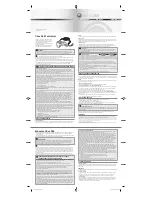
17
DTE ports use the following signals for communication:
DTE PORT PIN/SIGNAL DEFINITION
Pin
Signal
(EIA-232)
Direction
Description
1
PGND
---
Protective Ground
2
Tx
Output
Data Out
3
Rx
Input
Data In
4
RTS
Output
Request To Send
5
CTS
Input
Clear To Send: Input handshake line. Must be positive
voltage before DTE device will transmit data.
6
DSR
Input
Data Set Ready: Input handshake line. Must be positive
voltage before DTE device will transmit data.
7
SGND
---
Signal Ground
8
DCD
Input
Data Carrier Detect: Generally used for modem
communication.
20
DTR
Output
Data Terminal Ready: Output handshake line. DTE device
will set this line to negative voltage when it can no longer
receive data.
If you are interfacing a DTE device to Print Master (DCE), you must
use a one-to-one or straight cable as in
Figure 2
on the following
page. If you are interfacing a DCE device to Print Master, you must
use a crossed cable as in
Figure 3
on the following page.
When using XON/XOFF protocol, it may be desirable to use cables
with only Tx, Rx and SGND (signal ground) connected. On the serial
ports of Print Master, input handshaking lines are enabled if nothing is
connected allowing the system to operate with only Tx, Rx and SGND
connected.
CAUTION: Do not attempt to use a serial cable on a parallel port.
Since an EIA-232 serial port usually carries a potential of +12 and
-12 volts, plugging a serial cable from that port into a parallel port may
cause damage to the parallel port.
















































